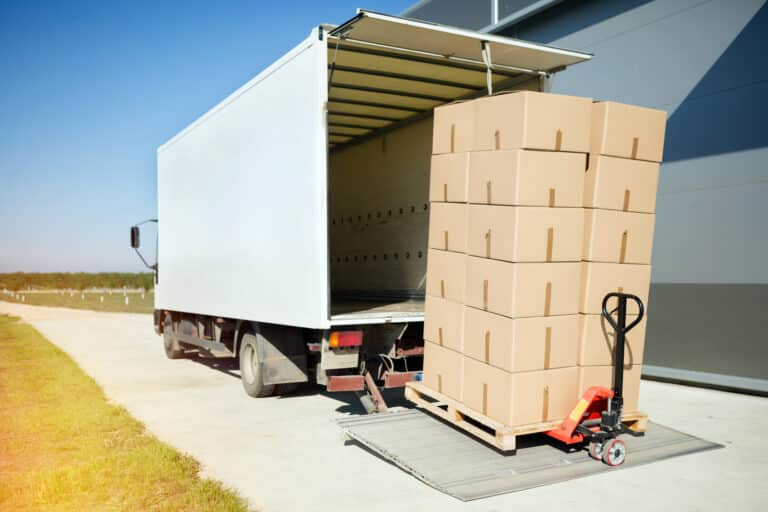Safe loading and unloading practices are crucial to maintaining operational efficiency, safety, and regulatory compliance for your fleet. With the increasing demand for swift and secure transportation services, it is essential for fleet operators to monitor and refine their loading and unloading processes to minimise potential risks, adhere to the relevant guidelines, and enhance overall safety. Implementing the proper procedures not only ensures the safety and well-being of drivers and other road users but also helps prevent damage to goods and vehicles, ultimately contributing to your fleet’s long-term success.
The Fleet Safety Academy recognises the significance of promoting safe loading and unloading practices as an integral aspect of modern fleet management. In this article, we will explore the importance of following the recommended safety guidelines while examining key strategies to ensure secure, efficient, and compliant loading and unloading processes within your fleet operations. By taking the appropriate steps to safeguard your loading and unloading activities, you can prevent accidents, boost productivity, and build a more resilient transportation infrastructure.
1. Key Guidelines for Safe Loading and Unloading Practices
To establish effective loading and unloading practices within your fleet, take heed of the following vital guidelines:
– Assess Vehicle Specifications: Determine the weight-bearing capacity of the vehicle, as well as the appropriate load distribution to avoid overloading and maintain effective vehicle control.
– Utilise Suitable Restraint Equipment: Use appropriate devices, such as straps, chains, or bars, to secure the load safely and prevent unwanted movement during transit.
– Follow Manufacturer’s Recommendations: Consult the vehicle manufacturer’s guidelines for loading and unloading to ensure compliance with specified limits and practices.
– Adhere to Legal and Regulatory Requirements: Be familiar with the relevant rules and regulations governing loading and unloading, including axle weight limits, load security, and documentation requirements.
– Implement Safety Processes: Develop standard operating procedures (SOPs) for safe load management to minimise risks for drivers, road users, and cargo.
2. Strategies for Ensuring Safe Loading and Unloading Processes
Incorporating safe loading and unloading practices within your fleet operations requires the implementation of sound strategies, including:
– Providing Comprehensive Training: Develop training programmes to educate drivers and support staff on safe loading and unloading techniques and the proper use of restraint equipment.
– Establishing a Safety Culture: Promote a company-wide commitment to safety, encouraging employees to take responsibility for their actions and comply with established guidelines and SOPs.
– Conducting Regular Inspections: Perform routine vehicle and cargo inspections to verify load security, confirm compliance with weight limits, and identify potential hazards or violations.
– Utilising Technology and Telematics: Leverage advanced technology, such as telematics and fleet management systems, for real-time monitoring of vehicle performance and load security, as well as automated alerts for potential issues.
3. The Vital Role of Drivers in Safe Loading and Unloading
Drivers play an indispensable part in maintaining safe loading and unloading practices within your fleet. To empower drivers to uphold these safety measures, focus on:
– Education and Awareness: Ensure drivers understand the risks associated with improper loading and unloading procedures and the potential impact on vehicle safety, cargo integrity, and their own well-being.
– Empowerment and Responsibility: Encourage drivers to take ownership of the loading and unloading processes, fostering a sense of personal accountability for the security and safety of cargo and vehicles.
– Communication and Feedback: Promote open communication between drivers, supervisors, and management, allowing for the exchange of information on potential hazards, suggestions for improvement, and lessons learned from incidents.
4. Ongoing Management and Monitoring of Safe Loading and Unloading Practices
To sustain the successful implementation of safe loading and unloading practices, continuously manage and monitor your fleet operations, focusing on:
– Performance Evaluation: Regularly review driver and fleet performance in relation to safe loading and unloading practices, identifying areas for improvement and taking corrective action as necessary.
– Updated Training and Equipment: Continuously update training materials and equipment in line with industry developments and best practices, ensuring your fleet adheres to the latest safety standards.
– Proactive Risk Management: Implement measures to identify and address potential risks in the loading and unloading processes, taking a proactive approach to mitigating hazards and incidents.
– Documentation and Record-Keeping: Maintain accurate records of loading and unloading activities, inspections, and incidents, facilitating effective management and compliance with regulatory requirements.
Conclusion
By prioritising safe loading and unloading practices within your fleet, you can protect your assets, ensure the well-being of your drivers and other road users, and maintain compliance with relevant regulations. The Fleet Safety Academy is dedicated to supporting you in establishing and maintaining safe freight transportation processes, offering tailored fleet safety programmes and expert guidance to help refine your loading and unloading practices. Contact our team of professionals today to discuss how we can collaborate in enhancing your fleet’s loading and unloading safety, ultimately bolstering your operational efficiency and driving your fleet towards sustainable success.











